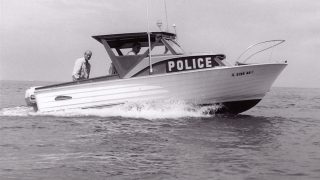
Las Vegas Metropolitan Police’s drone program, launched in 2017, is adding a new aerial dimension to crime-fighting.
First used to document the scene of the October 1, 2017, mass shooting across from the Mandalay Bay Hotel, the drone program has many use cases that can save lives, as well as tax payer money.
According to a KTNV report, the drones are useful for efficiently documenting crime scenes, especially related to deadly crashes or homicides and have also been used during police officer-involved shootings and SWAT operations.
The use of a drone for surveillance and information-gathering is much more time and cost-efficient than other aerial alternatives like helicopters. It also reduces dangers for detectives who can investigate remotely via a drone.
Sgt. Brad Cupp with the Technical Operations Section oversees the unmanned aerial systems program. The unit includes 10 detectives trained and certified with FAA Part 107 drone operator credentials. These detectives must also undergo monthly training and quarterly refresher courses.
One of the biggest impacts of the arrival of drone technology may be the replacement of police helicopters for tracking suspects from the air.
“Probably one of the more controversial things that we’re looking to explore is probably the patrol support functionality that the helicopter is already being used for, to provide an in the air overall perspective for patrol units that are responding to a crime in progress,” said Cupp.
Cupp noted that the drones cannot be used to fly over private residences without a search warrant.
“We can’t fly over peoples’ residences and snoop in people’s windows without a search warrant, there’s laws or regulations as a police department that we have to follow and we don’t get any specialized treatment just because we are a law enforcement agency operating a drone,” said Cupp.
The use of a drone can also reduce the risk that helicopters present to both those in the vehicle and on the ground.
“Anytime you put an aircrew up in an aircraft, there are in-air emergencies that happen from time to time and as a police department we’re not immune to that,” explained Cupp.
He continued, “Every time an aircrew goes up, there’s some level of risk that is presented, not only to the pilots but in the event of an emergency, any collateral damage for people and citizens that are on the ground, should that aircraft come down.”
There have been two documented helicopter hard landings in the past 10 years for Las Vegas police, so there is always the risk that something could go wrong, which poses dangers to the aircrew and civilians. Drones, on the other hand, provide a smaller and safer footprint.
“Our helicopters weigh in excess of 3,500 pounds, there’s probably 60 gallons or more of jet fuel on board, and there are large metal rotors flying around,” Cupp said.
Drone technology can also fly closer to the ground and in more rugged terrain, making them useful for search and rescue missions. A drone can be used to locate stranded hikers, and then send GPS coordinates to a rescue helicopter.
In addition, drones also have a significant economic advantage to helicopters.
“When you consider it takes approximately $400-plus an hour to operate the helicopter compared to $5 to $10 an hour, depending on which drone aircraft we’re operating, the economics of it makes sense very quickly,” explained Cupp.





